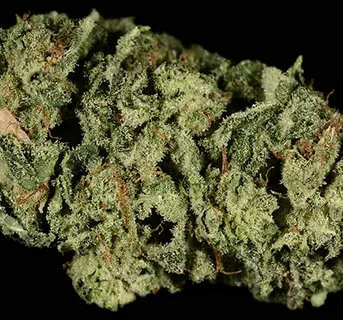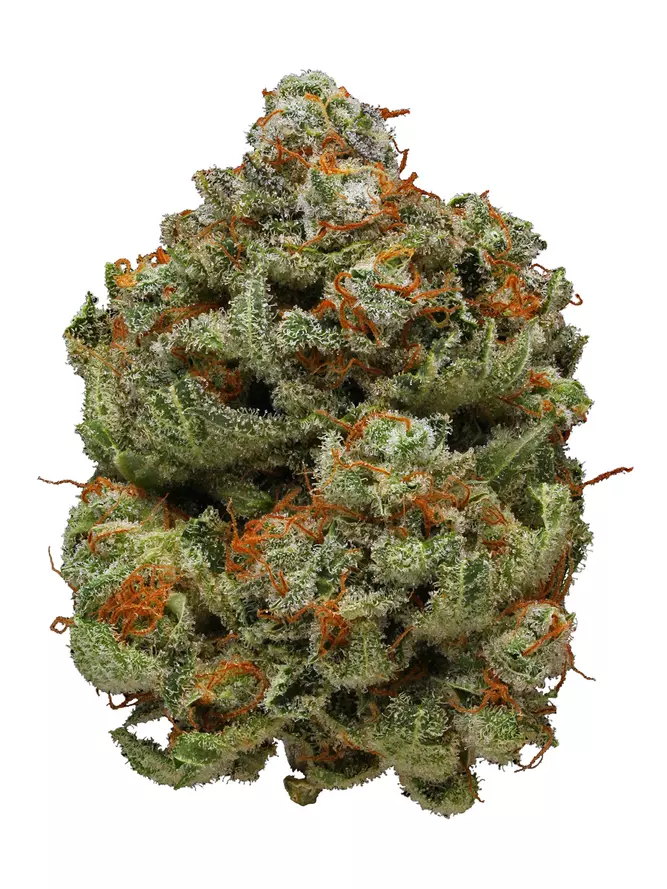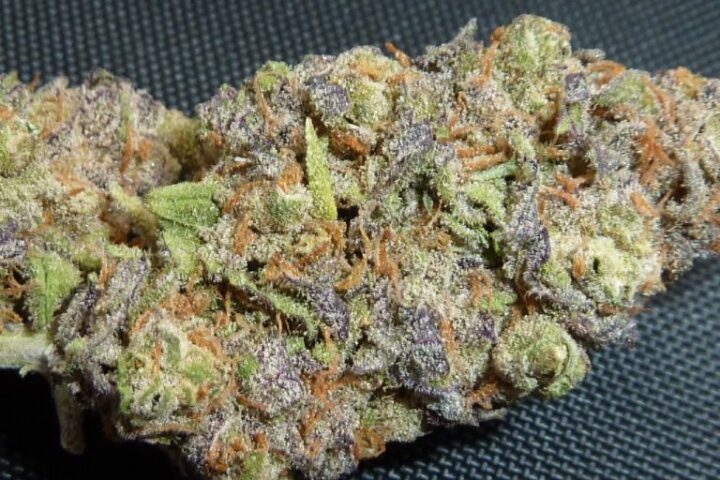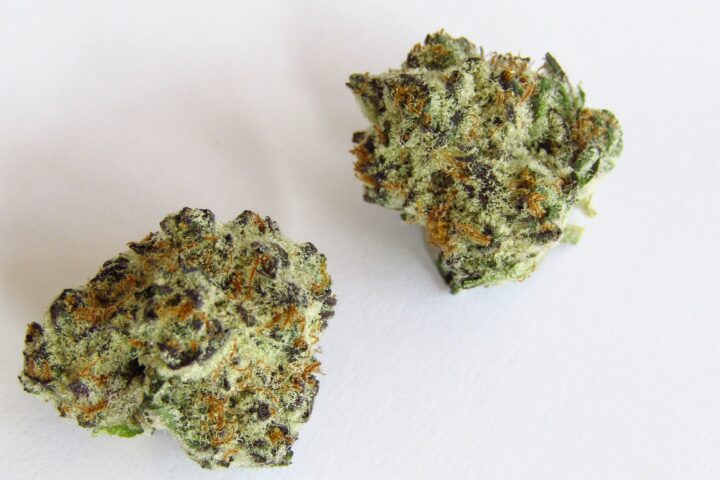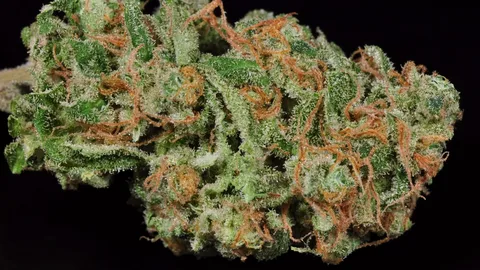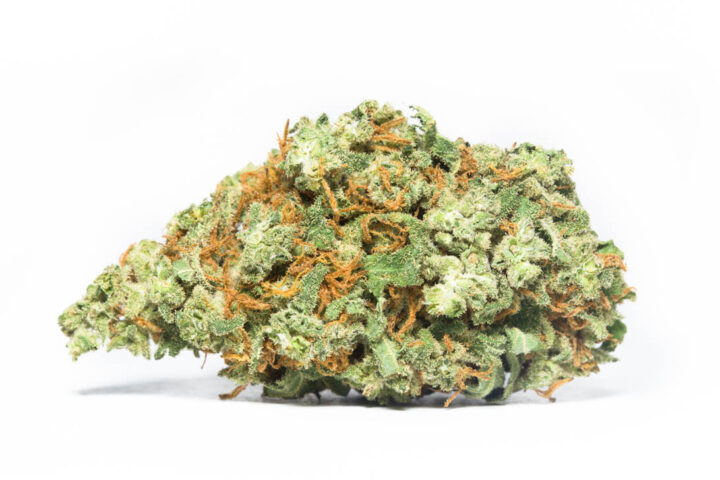Origin and Genetics
Parent Strains: A Complex Mix
The origin of the White Berry or White Raspberry weed strain can be attributed to its parent strains, which have been carefully selected and bred to create this unique and sought-after variety.
One of the parent strains of White Berry is Blueberry, a legendary indica-dominant variety known for its intense blueberry flavor and aroma, as well as its potent relaxing effects.
The other parent strain of White Berry is Raspberry Cough, a hybrid strain that combines the sweetness of raspberries with the energizing and uplifting effects of a cough syrup-like cannabis strain.
When crossed, these two parent strains created a complex mix of genetic traits that gave rise to the White Berry or White Raspberry weed strain.
The genetics of White Berry can be broken down into its indica and sativa components, with approximately 70-80% indica and 20-30% sativa content.
Its indica dominance gives White Berry a sedating and relaxing effect, while its sativa component provides a creative and uplifting boost.
The THC content of White Berry is typically in the range of 15-22%, with some reports suggesting higher levels up to 25%.
The CBD content of White Berry is relatively low, ranging from 0.5-1.5%. However, its terpene profile is rich in compounds like myrcene, limonene, and pinene, which contribute to its unique flavor and aroma.
The terpene profile of White Berry has been reported to have a sweet and fruity taste, with notes of berries, citrus, and herbs.
The overall effect of White Berry is characterized by its relaxing and sedating properties, making it an excellent choice for those seeking relief from stress, anxiety, and insomnia.
Its creative and uplifting effects also make it a popular choice among artists, musicians, and writers who need inspiration to fuel their imagination and productivity.
The White Berry strain is a result of crossing two parent strains, however, the exact combination remains unknown due to its indica dominant nature.
The origin of the White Berry strain, also known as White Raspberry, is shrouded in mystery due to its indica-dominant nature.
While the exact combination of parent strains remains unknown, it is believed that this strain was created through a cross between two distinct varieties.
The result of this cross is a unique and potent strain that boasts high levels of THC, making it popular among medical marijuana patients and recreational users alike.
In terms of genetics, the White Berry strain is thought to be a descendant of the indica-dominant strains of cannabis, which are characterized by their dense buds and sedating effects.
Some of the key genetic characteristics of the White Berry strain include:
- A high THC content, typically ranging from 18-22%
- A moderate CBD content, usually between 1-3%
- A complex terpene profile, featuring notes of berries, earthy undertones, and a hint of sweetness
As with many cannabis strains, the genetic makeup of White Berry is subject to variation depending on factors such as growing conditions and breeding.
However, its indica-dominant nature ensures that this strain will consistently deliver a relaxing and calming high, making it an excellent choice for those seeking relief from stress, anxiety, or pain.
Cannabinoid and Terpene Profile
The origins of White Berry, also known as White Raspberry, are not well-documented, but it is believed to be a hybrid strain of cannabis that originated from the crossing of two different parent strains.
One theory suggests that White Berry was developed by crossing a Blueberry indica strain with a White Widow sativa strain, resulting in a unique blend of flavors and effects.
Another theory suggests that White Berry is actually a variant of the famous White Russian strain, which itself is a cross between AK-47 and White Widow.
The genetics behind White Berry are likely to be complex, with multiple phenotypes and variations contributing to its distinct characteristics.
The cannabinoid profile of White Berry is known to be relatively balanced, with moderate levels of THC (around 18-20%) and low to moderate levels of CBD.
THC is the primary psychoactive compound responsible for the euphoric and relaxing effects associated with cannabis use.
White Berry’s cannabinoid profile may also include other minor cannabinoids such as CBG, CBN, and CBC, which have potential therapeutic benefits but are not as well-studied as THC and CBD.
The terpene profile of White Berry is where this strain truly shines, with a complex blend of aromatic compounds that contribute to its unique flavor and aroma profiles.
Terpenes are responsible for the distinct aromas and flavors associated with different cannabis strains, and play a key role in modulating the effects of cannabinoids.
The dominant terpenes in White Berry are believed to be beta-myrcene, alpha-pinene, and limonene, which contribute to its sweet and fruity aroma profile.
Beta-myrcene is known for its sedating and relaxing properties, while alpha-pinene has been shown to have anti-inflammatory and bronchodilatory effects.
Limonene, on the other hand, has been linked to potential antidepressant and anxiolytic (anxiety-reducing) effects.
This strain has shown high THC levels and low CBD content. Its unique terpene profile contributes to its fruity aroma, which is reminiscent of sweet raspberries and strawberries.
The origin of White Berry, also known as White Raspberry, is not well-documented, but it is believed to be a cross between two indica-dominant strains.
Genetics play a crucial role in determining the characteristics of cannabis plants, including their THC and CBD content, terpene profile, and overall appearance.
The exact genetics of White Berry are not publicly disclosed, but based on its effects and aroma, it is likely that it contains genes from strains with high THC levels and fruity flavors.
Here’s a list of possible characteristics influenced by genetics in White Berry:
- THC Content: High levels of tetrahydrocannabinol (THC), the primary psychoactive compound found in cannabis plants. THC is responsible for the ‘high’ associated with marijuana use.
- CBD Content: Low levels of cannabidiol (CBD), a non-psychoactive compound that has therapeutic benefits and is often used to treat various medical conditions.
- Terpene Profile: A unique combination of terpenes, which are the aromatic compounds responsible for the distinctive flavors and aromas found in cannabis strains. Terpenes can contribute to the medicinal properties of marijuana.
- Aroma: Fruity aroma, reminiscent of sweet raspberries and strawberries, which is a result of the plant’s terpene profile.
The unique genetic combination of White Berry contributes to its distinctive effects, aroma, and appearance. However, more research is needed to understand the specific genetics behind this strain and its potential therapeutic applications.
Effects and Medical Benefits
Anxiolytic and Pain-Relieving Effects
The effects of White Berry, also known as White Raspberry, are often described as a slow and gentle onset, allowing users to fully experience its medical benefits.
This strain is known for its anxiolytic effects, providing relief from anxiety, stress, and depression without causing drowsiness or sedation.
White Berry’s anxiolytic properties make it an excellent choice for individuals seeking a natural remedy for mental health conditions without the risk of addiction or negative side effects associated with pharmaceuticals.
The pain-relieving effects of White Berry are also noteworthy, providing relief from chronic and acute pain, making it a popular choice among medical marijuana patients.
The strain’s high levels of CBD contribute to its analgesic properties, allowing users to experience significant reduction in discomfort without the psychoactive effects often associated with THC-rich strains.
Medical professionals may recommend White Berry for patients experiencing chemotherapy-induced nausea and vomiting, as well as those suffering from multiple sclerosis and other chronic pain conditions.
White Berry’s unique terpene profile also contributes to its therapeutic benefits, providing a sense of relaxation and calmness while promoting focus and mental clarity.
This strain is often recommended for individuals seeking relief from stress and anxiety, particularly in social situations, as it allows users to feel comfortable and at ease without the stigma associated with traditional marijuana use.
White Berry has been reported to provide anxiolytic effects, helping individuals manage anxiety disorders. It also offers pain relief, which can be attributed to its high THC content.
The effects and medical benefits associated with White Berry, also known as White Raspberry, are multifaceted and offer relief for individuals suffering from various conditions.
One of the primary effects reported by users of White Berry is its anxiolytic properties, which enable those who consume it to effectively manage anxiety disorders. This strain’s ability to reduce anxiety can be attributed to its unique chemical composition, particularly in its terpenoid profile.
The pain-relieving properties of White Berry are another significant benefit associated with this strain. The high THC content present in White Berry contributes to its analgesic effects, which provide relief from physical pain and discomfort.
Some users have reported experiencing a sense of euphoria or happiness when consuming White Berry, although it is essential to note that individual reactions may vary greatly depending on factors such as dosage and personal tolerance. In addition to pain relief and anxiolytic properties, this strain can also induce relaxation, allowing individuals to unwind and manage stress more effectively.
As with any cannabis strain, the effects of White Berry can be influenced by various factors, including the user’s mood, environment, and expectations. It is crucial for consumers to approach consumption with a clear mind, in a comfortable setting, to maximize its potential benefits.
Potential Medical Applications
Some potential medical applications for White Berry include:
- Anxiety disorders: The anxiolytic properties of White Berry make it a potentially effective tool in managing anxiety, which can significantly impact daily life and well-being.
- Pain management: The strain’s high THC content contributes to its analgesic effects, offering relief from physical pain and discomfort.
- Stress relief: By inducing relaxation and reducing anxiety, White Berry may help individuals manage stress more effectively.
Conclusion
In conclusion, the effects and medical benefits associated with White Berry are diverse and offer a range of potential applications. Its anxiolytic properties, pain-relieving abilities, and capacity to induce relaxation make it a valuable option for individuals seeking relief from various conditions.
Sedating Properties
The White Berry strain, also known as White Raspberry, is a popular cannabis variety that has garnered attention for its unique effects and medicinal benefits. As with most strains, its characteristics can vary depending on factors such as cultivation methods and individual tolerance.
One of the primary attributes of White Berry is its sedating properties, which are attributed to high levels of myrcene, a compound found in many cannabis varieties. Myrcene is known for inducing relaxation and reducing anxiety, making it an attractive option for those seeking a calming effect without intense psychoactivity.
The sedative effects of White Berry can be beneficial for individuals experiencing sleep disturbances or anxiety-related issues. Its ability to promote relaxation can help users fall asleep faster and improve the quality of their rest. However, it’s essential to note that individual reactions may vary, and some people might find it more energizing than sedating.
From a medical standpoint, White Berry has been reported to offer relief from various conditions, including chronic pain, inflammation, and nausea. The strain’s high levels of cannabidiol (CBD) contribute to its therapeutic effects, which are often associated with reduced inflammation and improved mood. CBD is also known for its potential in alleviating symptoms related to multiple sclerosis, arthritis, and fibromyalgia.
While White Berry is primarily used for its sedating properties, some users have reported increased focus and mental clarity when consuming smaller doses. This contrast can be attributed to the presence of THC and other cannabinoids, which interact with myrcene to produce varying effects depending on individual tolerance and consumption methods.
The unique terpene profile of White Berry contributes to its diverse effects. With a balance of earthy, sweet, and floral notes, this strain is often described as having an herbal aroma and flavor profile, distinct from other varieties like Blueberry or Raspberry. The terpenes present in White Berry can have separate effects on mood, relaxation, and focus, making it a versatile option for various use cases.
When using White Berry, consider starting with lower doses to assess personal tolerance and desired effects. Users can then adjust their consumption based on how the strain affects them. Additionally, proper ventilation, storage, and handling are essential when working with any cannabis product to ensure optimal quality and minimize risks associated with consumption.
As a hybrid of indica-dominant White Widow and a Blueberry phenotype, White Berry is an attractive option for those seeking a balanced high without the intense psychoactivity often found in sativa-dominant varieties. Its unique combination of myrcene and other compounds makes it a sought-after strain among consumers looking to manage chronic pain, inflammation, or anxiety while experiencing the benefits of cannabis.
Remember that personal experiences with White Berry can vary greatly depending on individual tolerance, consumption methods, and the quality of the product. Users should consult local regulations regarding cannabis use and be mindful of potential interactions with other medications when consuming any cannabis product.
This strain is known for its sedating properties, making it a suitable choice for those who need help with insomnia or sleep disorders.
The White Berry strain, also known as White Raspberry, is a popular choice among cannabis enthusiasts due to its unique set of effects and medical benefits.
The primary characteristic of this strain is its sedating properties, which make it an ideal option for individuals struggling with insomnia or sleep disorders. The calming and relaxing nature of the White Berry allows users to unwind and prepare for a restful night’s sleep, providing relief from stress and anxiety that can often interfere with sleep.
Beyond its sedative effects, the White Berry strain also offers pain relief benefits, making it suitable for individuals experiencing chronic or acute pain. The analgesic properties of this strain help to reduce inflammation and discomfort, allowing users to manage their pain more effectively.
In addition to its therapeutic effects, the White Berry strain is also known for its ability to alleviate symptoms associated with anxiety and depression. The calming nature of this strain helps to regulate mood and emotions, promoting a sense of balance and well-being.
White Berry’s sedating properties also make it an excellent choice for individuals dealing with attention deficit hyperactivity disorder (ADHD). The relaxing effects help to reduce impulsivity and increase focus, allowing users to stay on task and manage their daily responsibilities more effectively.
The medical benefits of the White Berry strain are not limited to its therapeutic effects. This strain has also been known to stimulate appetite, making it a viable option for individuals dealing with nausea and vomiting associated with chemotherapy or other conditions.
It’s essential to note that the effects and benefits of the White Berry strain can vary depending on individual tolerance, dosage, and method of consumption. However, as a sedating indica-dominant strain, White Berry is generally considered suitable for evening use, helping users relax and prepare for a restful night’s sleep.
Overall, the White Berry strain offers a unique combination of effects and medical benefits, making it an attractive option for individuals seeking relief from insomnia, pain, anxiety, depression, ADHD, or other conditions.
As with any cannabis product, users are advised to start with low doses and gradually increase as needed, ensuring they achieve the desired therapeutic effects without experiencing adverse reactions.
- Xeno Weed Strain Information - October 9, 2024
- White Berry Aka White Raspberry Weed Strain Information - October 8, 2024
- Super Jack Aka Super Jack Herer, Super Silver Jack Weed Strain Information - October 5, 2024

